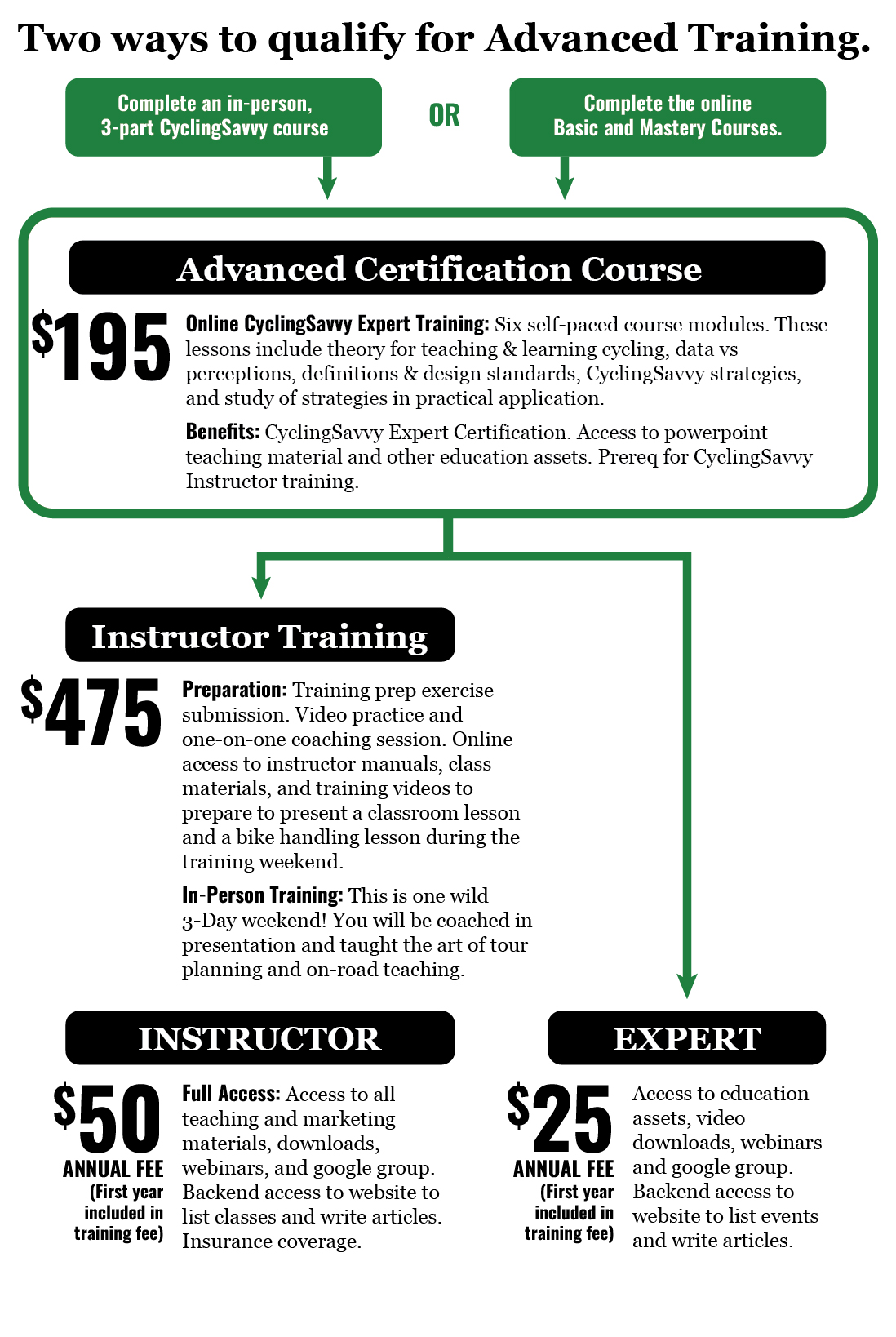Instructor Qualification
This program is not affiliated with the League of American Bicyclists. Instructor qualifications are not transferable, nor is it necessary for one to be a League Cycling Instructor (LCI) to become a CyclingSavvy Instructor (CSI).
To be eligible to become a CyclingSavvy Instructor (CSI), a candidate must complete and pass the Advanced Certification course and receive an invitation from the trainers. There are two tracks to participate in the Advanced Certification course: 1) complete an in-person 3-part CyclingSavvy class and request a recommendation from your instructor, or 2) Complete the Ride Awesome online courses (Basic & Mastery).
Candidate Assessment
The assessment seeks feedback on the following:
1) Open-minded and willing to learn and participate in the CyclingSavvy class. (A CSI believes s/he always has more to learn… we learn from each other, from our students, from our successes and our mistakes, we constantly refine and improve ourselves as cyclists and as teachers.)
2) Understands and embraces the teaching methodology of CyclingSavvy (removing belief barriers and freeing students from the limitations of far-right mentality).
3) Understands and embraces the traffic cycling techniques we teach (lane control, strategic road positioning, making lane changes early, active communication, control & release, etc.).
4) Has good situational awareness. (Pays attention and doesn’t engage in distracting behavior).
5) Shows enthusiasm for empowering and celebrating the success of others. (A principle of our program is that we set people up for success. We don’t test people or pressure them to perform. We work to ensure their success, and most importantly, that they have a good experience in the class.)
6) Demonstrates the ability to follow directions. (To give directions, you need to be able to follow directions.)
7) Ability to communicate clearly and succinctly. (This is an essential skill. CSIs are responsible for sending students into complex road features and traffic conditions; they must be able to communicate instructions clearly and succinctly. Much of the CSI training involves developing and refining strategic communication of concepts and instructions.)




